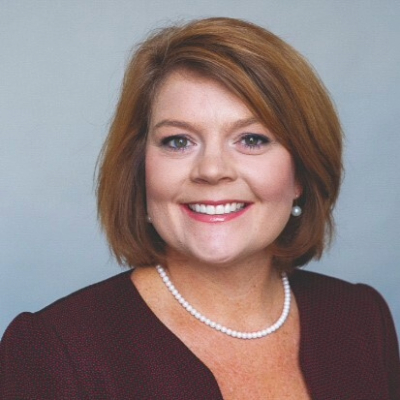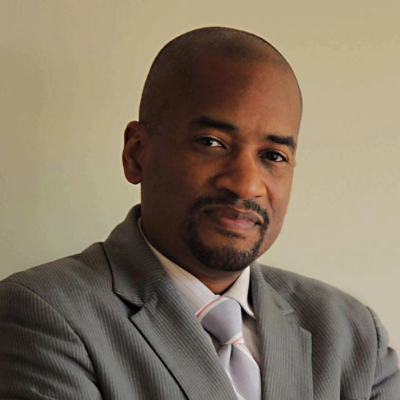 “I think it's important for Alabamians to know that AHEC is out there in their communities and wants to work with everyone,” said Alabama Statewide Area Health Education Centers (AHEC) Network Director Becky Reamey, Ph.D.
“I think it's important for Alabamians to know that AHEC is out there in their communities and wants to work with everyone,” said Alabama Statewide Area Health Education Centers (AHEC) Network Director Becky Reamey, Ph.D.
Congress created Area Health Education Centers in 1971 to recruit, train, and retain a workforce of health professionals committed to serving communities with insufficient access to care. In 2012, Alabama established a network of five centers across the state, each equipped to meet local challenges. These centers are now located in Dothan, Gadsden, Huntsville, Livingston, and Mobile.
“Each center has its own identity. They have their own passions and their own projects,” Reamey said. “They are boots on the ground. [They] see the needs of the communities. [They] see the access that is needed.”
Lamont Dupree is executive director of North Alabama AHEC in Huntsville.
“We've got a small but mighty team here at North Alabama,” said Dupree. “It's a team effort, and I think that's important. Collaboration, partnering, working together is key to really making any systemic, substantial and lasting change.”
With the support of area partners—institutions of higher education, health care providers, community partners and more—centers mobilize resources to aid in the education and training of Alabama’s current and future health care workforce.
“There is a huge need for providers in health care for these rural communities. If we can get providers in those communities, then we can create better health outcomes for our whole state,” explained Reamey. “We want to educate for better health outcomes, we want to work with communities to see their students grow in health care professions, and we want to just be a resource for those communities across the state.”
AHEC aims to create a pathway for students at a very young age. It focuses on those potentially interested in pursuing a career in health care, educating them about their options and holding their interest.
“We want to see them in middle school taking courses that may impact their career in the future,” Reamey said. “We want to connect students with the training programs and then be able to connect them with the hospitals and employers after they get those credentials. That's really how we’ll create an impact in the state of Alabama, by getting students interested in health careers early on in rural communities, keeping them interested as they go throughout their education and then getting them to stay in their home communities and be those providers.”
 Dupree started his AHEC career in this arena. Nearly 10 years ago, he came onboard as a program coordinator, focused on advancing these programs in the 13 counties North Alabama AHEC serves.
Dupree started his AHEC career in this arena. Nearly 10 years ago, he came onboard as a program coordinator, focused on advancing these programs in the 13 counties North Alabama AHEC serves.
“We did a lot of school in school presentations, talking to students about going into health care careers. We have a summer program that we still do, that I was primarily responsible for. It focuses on [getting students going in] health care careers and just giving them that exposure,” explained Dupree.
AHEC offers students an introduction to the many career opportunities available in health care. Students visit health science programs at UAB, Samford and several two-year institutions. While students are often familiar with traditional health care professionals, like doctors or nurses, Reamey says the majority are unaware of the numerous other roles critical to health care delivery.
“Just because you are thinking about health care, it doesn't mean you have to like blood,” said Reamey. “[We want to open doors for students] in financing and hospital tech, radiology tech. We have a number of community colleges in the state of Alabama that provide excellent training programs.”
Alabama AHEC’s programs also provide students with the opportunity to participate in hands-on community service projects, like health fairs. Yet, there is never any pressure to pursue a health-related occupation. Dupree says he makes it clear to students, a job in health care is not for everyone. He encourages them to do their due diligence and explore all their options.
“The overarching goal is to give them a vision of helping, [and] also saying, ‘okay, how do you want to help? What are the careers that you can plug into your helping?’” said Dupree.
 Many of his students do, however, go into health care. Dupree says he’s been around long enough to see some of from his summer program realize their ambitions.
Many of his students do, however, go into health care. Dupree says he’s been around long enough to see some of from his summer program realize their ambitions.
“It's fun to watch these students… I have one that's a nurse at Huntsville Hospital. I have others that have gone on to medical school, finishing their programs. I've got one that's about to finish with a degree in occupational therapy,” Dupree said. “To watch these students that came through as high school students now finishing up… to a point where they're now going into their professions. That's been really cool.”
Alabama AHEC leaders say their initiatives support all points along the health professions pathway. In addition to connecting students with health careers, it also strives to connect health care professionals to the communities that need them. Facilitating greater access to care means creating better health outcomes in Alabama.
“During Covid, I believe wholeheartedly that we saved people's lives. That was probably one of the most rewarding times,” Dupree said. “Seeing people find relief.”
AHEC did a lot of work to respond to the pandemic. That includes testing, vaccinations and fast-tracking one of its now invaluable initiatives.
“It actually accelerated getting our community health workers and getting that program up and running on the fly, even though it was something… my predecessor already had on his radar and wanted to do,” explained Dupree.
Community health workers are integral to community education and a core component of AHEC’s programming. They help to keep community members connected to the information and resources they need.
“A community health worker could be anyone and, with some training, be part of our team,” said Reamey.
This is not new. Dupree says many of their health workers were already doing the work— helping connect people to services, providing transportation to doctor’s appointments, educating others about how to navigate the health system—and would continue to serve their communities without compensation.
Now, these individuals have a title.
“That term— community health worker—has become more prominent, where I don't think it was even thought of before. And now, trying to get legislation passed so they can be a recognized entity in the state,” said Dupree. “Expand the role so… organizations can feel more comfortable employing community health workers because they will get those reimbursements and get compensated.”
By offering support and compensation, AHEC has helped to empower regular people who want to help their communities.
“I had one retiree… doing some of these things already and this kind of elevated the work that she was doing,” explained Dupree.
The goal is to grow the community health workforce so that each county has at least one worker.
“We want to make sure we're continuing to… give them opportunities to do more and to get more,” Dupree said. “Those are the things that make the difference, is helping the people who do. Our community health workers [are] daily making a difference in people's lives.”
In addition to cultivating their community health worker program, Dupree continues to work with young people. He hopes to create a peer support program to address access to behavioral health resources. Dupree is also training youth community health workers.
“We're trying to get them geared toward, not just to… be a community health worker, but to get them in the mindset of being an answer—not in the future, but now. You can make a difference in your community now,” explained Dupree.
As part of Alabama AHEC, and with the help of his team, Dupree believes he does.
“I wouldn’t still be here if I didn’t think we were [making an impact],” said Dupree.
“The impact we've been able to see really has been full circle,” Reamey said. “In public health, workforce development, and just community engagement in general.”